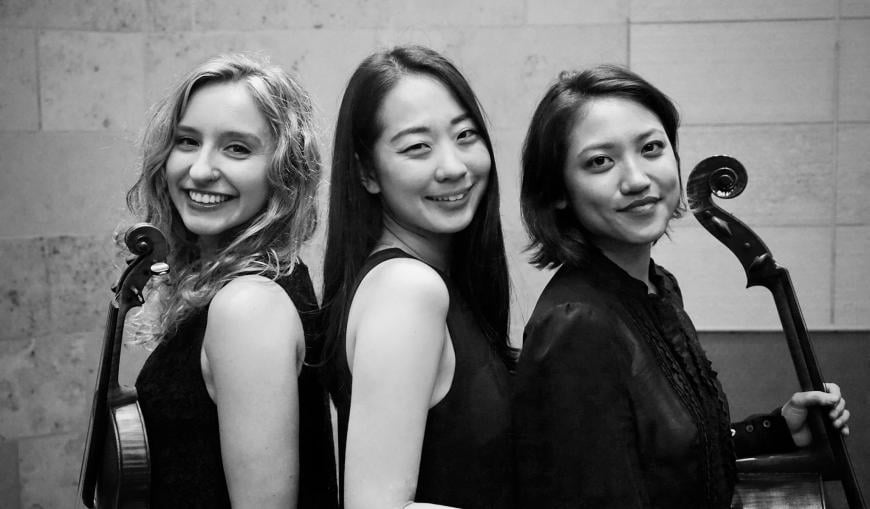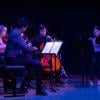
In the midst of the California Festival, last week’s Chamber Music Tuesday program at the San Francisco Conservatory of Music’s Bowes Center — with its views of the Symphony, the Opera, and City Hall — felt like a special tribute to San Francisco.
But first, Gustav Mahler. The finished movement of the Piano Quartet, the composer’s only piece of chamber music, comes from his teenage years. It often sounds more like Johannes Brahms than the Mahler we know. Still, it’d be wrong to dismiss the work as juvenilia. Here, as in the mature works, repeats are revelations, the sense of resignation poignant — especially on Tuesday under student cellist Constantine Janello.
L’Arc Trio, a group of SFCM alumni (violinist Maria van der Sloot, cellist Christine Lee, and pianist Jung-Eun Kim), presented the pandemic-delayed world premiere of Vivian Fung’s Ominous Machine. Fung, originally from Canada, now teaches at Santa Clara University, and in the Bay Area, her music is always on. Left Coast Chamber Ensemble, the San José Chamber Orchestra, and the Telegraph Quartet are just a few of the groups who will play her work this season.

It’s easy to see the appeal. Ominous Machine clowns like a Rube Goldberg machine; at every juncture there’s an unexpected delight. Tiny motifs, fiercely virtuosic, interlock in an unforgiving jig. You catch a glimpse of a color here, a texture there, but in a flash, it’s gone. The system freezes, as if a kid has pocketed a domino and now the rally won’t go. It’s only a pity that this piece, five years in the making, lasts five minutes. Indeed, Fung has since expanded the material into a quartet. With luck, it’ll be played here soon.
Jonathan Bingham’s string quartet Pareidolia (originally written for the San Francisco Chamber Orchestra and performed on Tuesday by a mix of students and guest artists) beckons with just enough mystery to keep you listening. The piece’s title refers to the perception of patterns — for example, scenes in clouds or people-shaped Cheetos — where there aren’t any. Bingham, who has composed dozens of film scores and teaches at SFCM, described the piece’s progression as randomness gaining coherence through repetition. But it’s the transitions, where the music is the least sure of itself, that are the most gripping.
The program’s most thrilling work was a 100-year-old piece: the First Piano Quintet of Ernest Bloch. Everyone seems to know the name of this Swiss-Jewish composer, but in the Bay Area, we hear little of his music — a shame, considering that he led SFCM for five years and spent another decade teaching at UC Berkeley.
The Piano Quintet No. 1 did appear earlier this year at Music@Menlo in a concert called “The Turbulent Century.” That gives you an idea of the sound. It’s startlingly intense music, as sensual and disturbing as an Egon Schiele portrait. Tones sour into quarter tones. Friendly chords are shut down. Motifs from the opening Agitato recur throughout the two following movements in a way that feels not so much like recollection as being stuck.
It was an impressive performance of a wild — and wildly hard — score. And it was particularly heartening to learn that four of the five players were students (violinists Yip Wai Chow and Mathea Goh, violist Isabel Tannenbaum, and cellist Ayoun Alexandra Kim). They made a tight ensemble. And SFCM faculty pianist Julio Elizalde steered the emotional arc of the piece, its initial tremor ceding to rhapsodic plumes and finally a ferocious totentanz. The chords climb: Shall this soul be lifted? The final resolution collapses: Nevermore!




